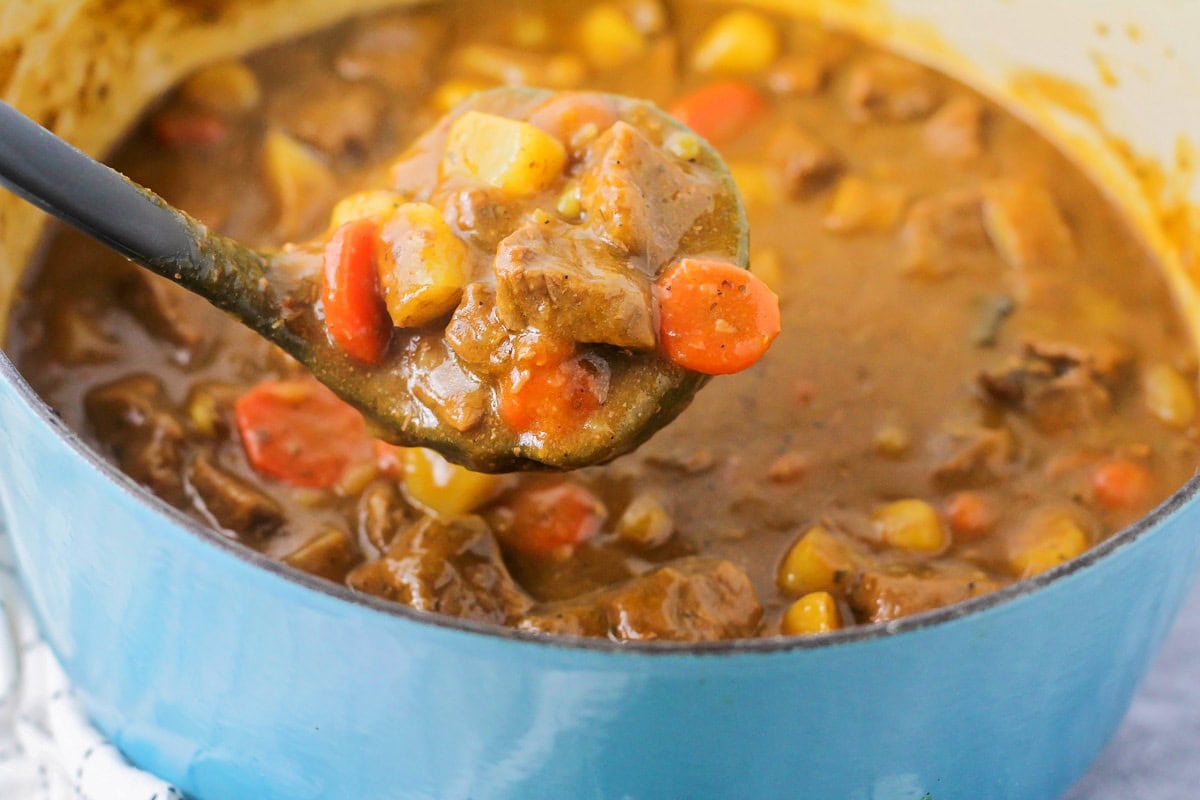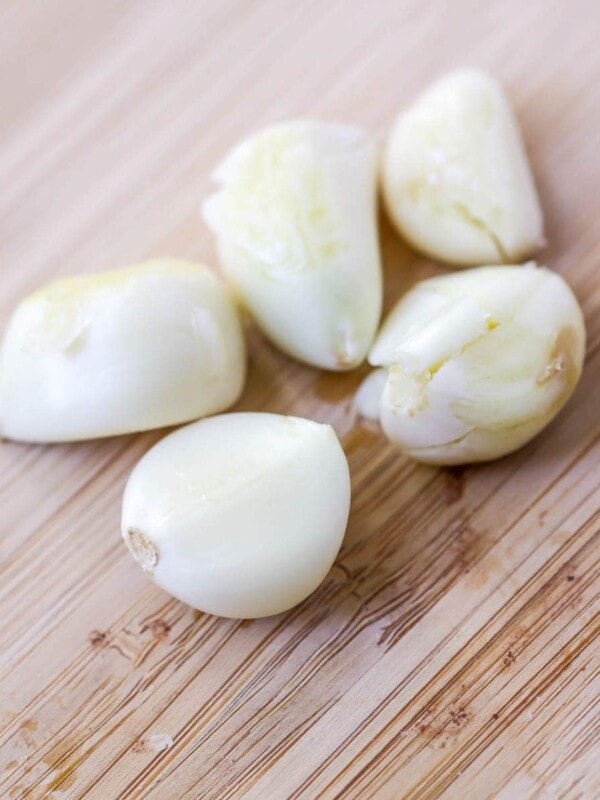This post may contain affiliate links. Please read our disclosure policy.
You’ve just made a big batch of soup—now what? Here’s how to freeze soup, so you can enjoy leftovers whenever you want!

Soup Anytime You Want!
We’re big fans of soup here at Lil’ Luna and love making them all year round! Soups are perfect for big batches that you can save for later and there are so many different kinds to choose from! Some of our favorites are Homemade Chicken Noodle Soup, Broccoli Cheese Soup, and Crock Pot Baked Potato Soup. It’s so convenient to have soup on hand and ready to thaw whenever we need it, which is why we love freezing soup.
There’s something so comforting about cozying up at home with a delicious bowl of soup! The good news is, we’ve got tons of soup recipes to choose from! Whether you’re looking for a soup that’s healthy, easy to make, or made in the crockpot, we’ve got you covered!
Why We Love Freezing Soup:
- Time-saving convenience. Freezing soup is like creating a homemade meal time capsule. When busy schedules or unexpected events arise, a ready-to-thaw bowl of comfort is just a freezer away.
- Portion control and meal planning. Freezing soup in individual portions makes meal planning a breeze. It’s easy to grab and go and helps to avoid food waste!
- Preserving seasonal flavors. Lock in the taste of summer tomatoes or fall harvest goodness by freezing your favorite seasonal soups. Enjoy the warmth of summer or the comfort of autumn any time of year.
Table of Contents

Freezer-Friendly Soups
While we love freezing soup, not all soups freeze the same! It’s important to know which soups will keep and reheat well. Some soups can still be frozen, but you might need to add certain ingredients after reheating to get the best flavor and texture.
- Soups with dairy. Dairy can separate, curdle, or become grainy after freezing.
- Soups with pasta or rice. Pasta and rice can become mushy and absorb too much liquid after being frozen and reheated.
- Soups with potatoes. Potatoes can become grainy, mealy, or waterlogged after freezing.
- Soups with delicate vegetables. Think squash, zucchini, and leafy greens. These vegetables can turn mushy or lose their texture when frozen and reheated.
- Soups with seafood. Seafood can become tough, rubbery, or develop an off-flavor after freezing.
Soups like Beef Stew, bean, and tomato-based varieties freeze well because their flavors deepen over time, and they keep their texture when reheated. Vegetable soups, such as Minestrone, and bean soups, like Black Bean or lentil, keep their consistency without becoming mushy. Tomato-based soups, like Roasted Tomato Soup or Chili, also hold up nicely, making them ideal for freezing and enjoying later.


Supplies
- Freezer-safe containers – Choose containers made of plastic, glass, or silicone that are specifically designed for freezing. Make sure they have airtight lids to prevent freezer burn! Here are a few of our favorites:
- Plastic freezer containers – These are 17oz and perfect for storing individual portions of soup.
- Large soup freezer containers – These are 32oz for larger portions.
- Ziploc freezer bags – Ziploc bags are great for storing soups—just be sure to get the freezer-safe ones. Resealable plastic bags are perfect for saving space since they can be laid flat in the freezer. Use quart-sized for smaller portions and gallon-sized for larger portions.
- Souper cubes – These are a fantastic option for freezing soup in perfectly portioned sizes. The sturdy silicone trays make it easy to pop out individual servings when you’re ready to reheat
- Labels and markers – You’ll want to be sure to label the type of soup and the date it was made to keep track of freshness.
- Ladle – Having a ladle will make your life so much easier when you’re filling your containers with soup.
- Funnel – This item is optional, but if you’re filling freezer bags, it will save you from making a mess!

How To Freeze Soup
- Cool. After cooking your soup, remove from the hot stovetop and let it cool before freezing. This makes it safer to handle when transferring to containers, and it prevents raising the freezer temperature or thawing other foods.
- Fill. Use a ladle to portion your soup into your preferred freezer-safe containers or bags. Make sure to leave about an inch of space at the top to allow the soup to expand as it freezes.
- Seal and label. If you’re using freezer bags, remove as much air as possible before sealing. For containers, make sure the lid is closed tightly to prevent air from coming in. Don’t forget to label your soups with the type and the date they were made.
- Freeze. You’re ready to freeze your soup!
How to Thaw Soup
You didn’t think we would tell you how to freeze soup without sharing how to thaw it, did you? If you’ve got frozen soup to thaw, pop it in the fridge overnight for a slow, safe thaw. If you’re low on time, the microwave’s defrost setting works too—just remember to stir occasionally. Once thawed, reheat the soup on low heat until it’s warmed through.

More Like This
Kitchen Tips
Soup recipes
Soup Collections
FAQs
Frozen soup can typically last in the freezer for up to 3 months. However, the exact duration may vary depending on the ingredients and the quality of the freezer. For best results, label your containers with the date and enjoy the soup within this timeframe.
It’s generally not recommended to refreeze thawed soup. Once thawed, the soup is more susceptible to bacterial growth. It’s best to eat it within a day or two of thawing.
Freezer burn happens when the moisture in food evaporates, leaving behind dry, tough patches. To prevent this, make sure the containers or bags used are airtight and sealed well, leave headroom at the top of containers when filling them, and make sure to label and enjoy your soup within 3 months of freezing.























